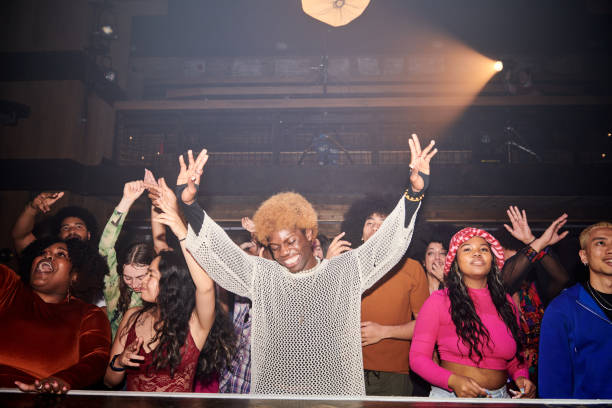Standing up in front of a large group of people is terrifying. However, when there’s a good crowd, who are cheering and getting involved, the stage feels a lot less scary. It’s all about captivating them.
Whether you’re a musician, public speaker, or performer, engaging with a crowd is essential for a memorable and impactful experience. Here are some easy-to-understand tips to help you connect with your audience and keep them engaged from start to finish.
1. Know your audience
Understanding who you’re speaking or performing to is the first step in engaging with them. Research the demographic, interests, and expectations of your audience. Tailoring your content to their preferences can make a big difference in how they respond.
2. Start strong
First impressions matter. Begin with a captivating opening, such as a powerful statement, an intriguing question, or an exciting piece of music. This grabs attention and sets the tone for the rest of your performance or speech.
3. Be energetic and enthusiastic
Your energy is contagious. If you’re excited and passionate, your audience will likely feel the same. Use expressive body language, make eye contact, and smile. Show them that you’re genuinely thrilled to be there.
4. Interact with the audience
Engage directly with your crowd. Ask questions, encourage participation, and respond to their reactions. For musicians, this could mean getting the audience to sing along or clap to the beat. For speakers, it could involve a show of hands or even bringing someone on stage.
5. Tell stories
People love stories. They are relatable and can make your content more memorable. Share personal anecdotes, relevant experiences, or compelling narratives that connect with the theme of your performance or speech.
6. Use visuals and props
Incorporate visuals, props, or multimedia elements to enhance your presentation. This can make your content more engaging and easier to understand. For example, musicians might use interesting instruments, while speakers could use slides or videos.
7. Pace yourself
Maintain a good pace to keep the audience’s attention. Avoid speaking or performing too fast or too slow. Varying your pace can also help emphasise important points and keep things interesting. Leave them wanting more by not giving all at once.
8. Read the room
Pay attention to your audience’s reactions and adjust accordingly. If you notice that people are losing interest, switch things up. Maybe tell a joke, change the topic, or interact more directly. Be prepared to change things up rather than sticking to a strict schedule.
9. Be authentic
Authenticity resonates with people. Be yourself and let your personality shine through. Audiences appreciate genuine performers and speakers who are true to themselves. People can tell when you aren’t being true to yourself.
10. End with a bang
Leave a lasting impression by ending on a high note. Finish with a powerful conclusion, an inspiring message, or an encore performance. A strong ending ensures that your audience leaves with a positive memory of your time together.
Practical tips for different settings
- Musicians: Encourage sing-along, share the stories behind your songs, and move around the stage to connect with different parts of the audience.
- Public speakers: Use rhetorical questions, repeat key points for emphasis, and make your speech interactive with audience participation.
- Performers: Use dramatic pauses, incorporate audience suggestions, and be mindful of your timing to maintain engagement.
By following these tips, you’ll be better equipped to engage with any crowd, making your performance or speech more enjoyable and impactful for everyone involved. Remember, the key to connecting with your audience is to be prepared, be present, and be yourself.




